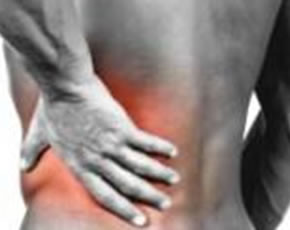
Acute low back pain is one of the most common reasons for presentation to health care providers. Concerns about serious pathologies that are uncommon causes of acute back pain (i.e. infection, pathologic fracture due to malignancy, etc…) drive much of the work-up that may not be necessary for every individual presenting with acute back pain. Here, Henschke et al (Arthritis Rheum 2009; 60(10): 3072) explore the prevalence of serious spinal pathology among primary care visits for acute low back pain, and whether specific symptoms were able to distinguish those with and without serious pathology.
Methods
Consecutive patients presenting to primary care for acute low back pain were assessed for serious spinal pathology using a 25 item questionnaire assessing the presence of “red flags”. Primary care providers participating in the study were trained in the study methods and clinical exam prior to study start. A random sample of 20% of the patients and all patients suspected of having serious spinal pathology as a cause of their low back pain (malignancy, infection, inflammatory arthritis, cauda equina syndrome, or fracture) were referred to a study rheumatologist for further evaluation. Patients were followed up for recovery or worsening.
Results
Of the 3,184 patients screened, 1,172 were eligible and underwent baseline clinical assessment. Of these, 1,167 had a completed 12 month follow-up (99%). Of those initially presenting, serious pathology was suspected in 11, of which the diagnosis was confirmed in 5. In follow up, serious pathology was reported in 15, of which the diagnosis was confirmed in 5. Finally, one additional serious spinal pathology was identified in the 20% random sample sent for rheumatologic review. Of the 11 cases of serious spinal pathology identified, 8 were spinal fractures, two were inflammatory arthritis, and 1 was cauda equina syndrome. There were no cases of spinal malignancy or infection identified.
Three of the four red flag questions for identifying fracture were informative: significant trauma, prolonged use of corticosteroids, and age>70 years. The sensitivity/specificity for fracture when any one of these factors was present was 88%/50%. Having all three of these features was 100% specific for fracture, but only 38% sensitive.
Among negative predictors that were commonly reported, the false-positive rate was high (>10%) for pain improving with exercise to falsely predict inflammatory arthritis. For the detection of cancer, age<20 years or >55 years, no relief with bed rest, and insidious onset had false-positive rates > 10%.
Conclusions
The number of patients presenting with serious spinal pathology was low. For fracture, the most common serious pathology encountered, specific red-flag questions may help to increase diagnostic certainty and identify those in need for additional work-up.
Editorial Comment
With the advent and availability of advanced imaging technologies, it is tempting for many providers to obtain these studies in patients presenting with acute low back pain, with the justification that they may pick up serious conditions (such as infection or malignancy) that need aggressive management. This study indicates that these findings are actually quite rare. In fact, because there were no cases of infection or malignancy, predictors could not be analyzed. For fracture, the red flag questions identified may help to guide further decision making regarding work-up and treatment. However, it should be noted that none of the questions (alone or in combination) was able to identify every patient with serious pathology identified at or after presentation, so there may remain a handful patients with serious spinal pathology who would go undiagnosed using this approach.

